Vog returns to West Hawaii as Kilauea eruption continues
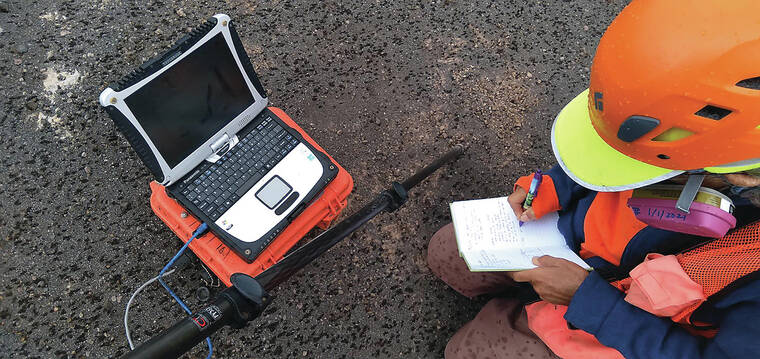
A Hawaiian Volcano Observatory gas scientist takes notes based on the spectra being displayed by the field laptop, which is connected to a FTIR spectrometer on the rim of Halema‘uma‘u crater on Wednesday. The FTIR is measuring the composition of volcanic gases being emitted during an eruption within Halema‘uma‘u by measuring how the plume absorbs infrared energy. (USGS photo by P. Nadeau/Special to West Hawaii Today)
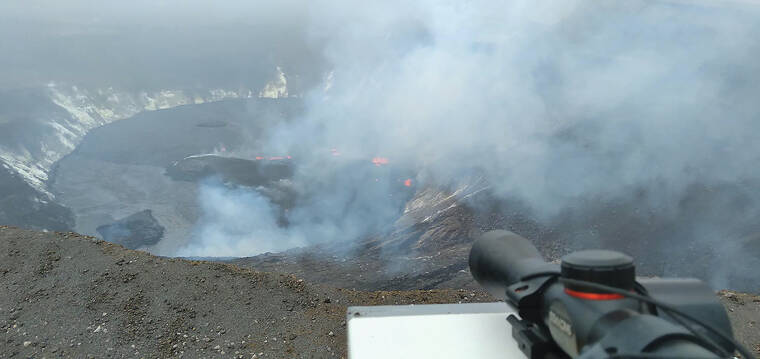
Hawaiian Volcano Observatory gas scientists use a FTIR spectrometer Thursday on the rim of Halema‘uma‘u crater to measure the composition of gases being emitted during Kilauea's summit eruption, which began Wednesday afternoon. The eruption is generating a plume consisting primarily of sulfur-dioxide (SO2), but also containing water vapor (H2O), carbon dioxide (CO2), and halogen gases such as HCl and HF. Sulfur dioxide (SO2) emission rates were estimated at around 20,000 tonnes per day Thursday morning. USGS photo by T. Elias/Special to West Hawaii Today)
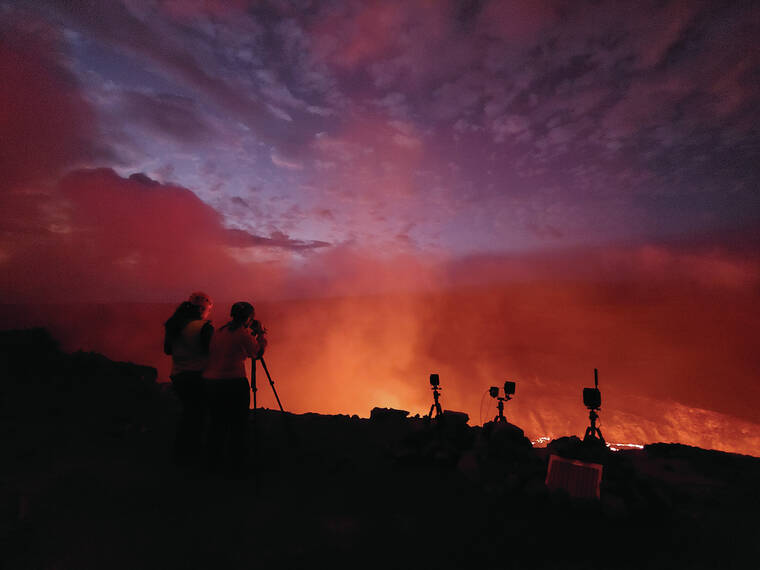
USGS Hawaiian Volcano Observatory scientists continue to monitor the new eruption at in Kilauea’s Halema‘uma‘u crater on Thursday evening. Field crews made measurements of the active fountains and the lava lake level to track how quickly it is rising. (USGS Photo by K. Lynn/Special to West Hawaii Today)
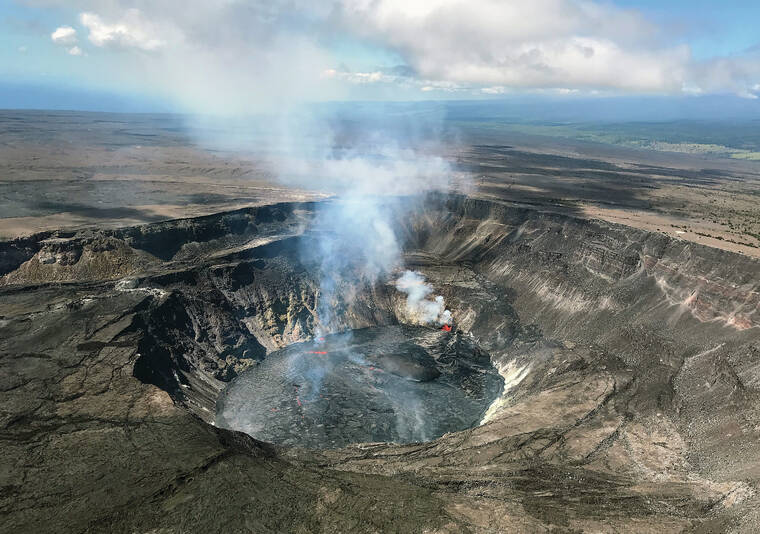
The Kilauea summit eruption continued within Halema‘uma‘u crater in Hawaii Volcanoes National Park Friday. This wide view of the new lava lake was taken Friday morning during a Hawaiian Volcano Observatory eruption overflight. Volcanic gas emissions remain elevated with lava fountains from the vent on the western crater wall, and from within the lava lake, producing the largest gas plumes. (USGS photo taken by L. DeSmither/Special to West Hawaii Today)
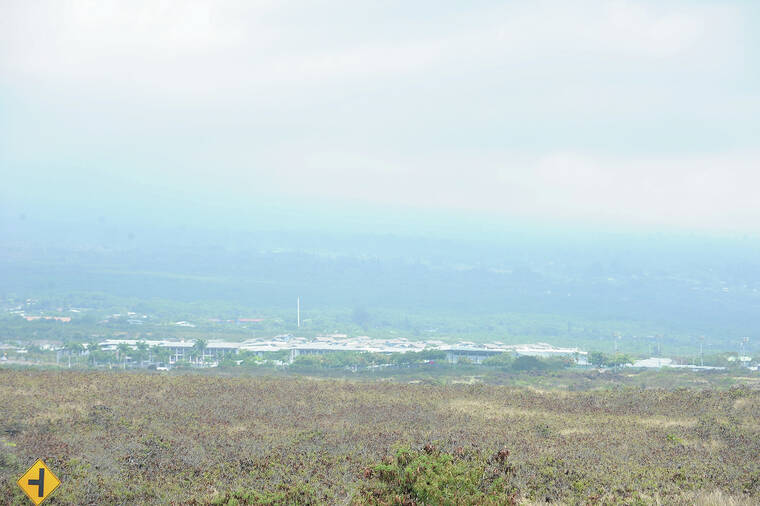
Hualalai is nearly obliterated by vog Friday afternoon. (Laura Ruminski/West Hawaii Today)
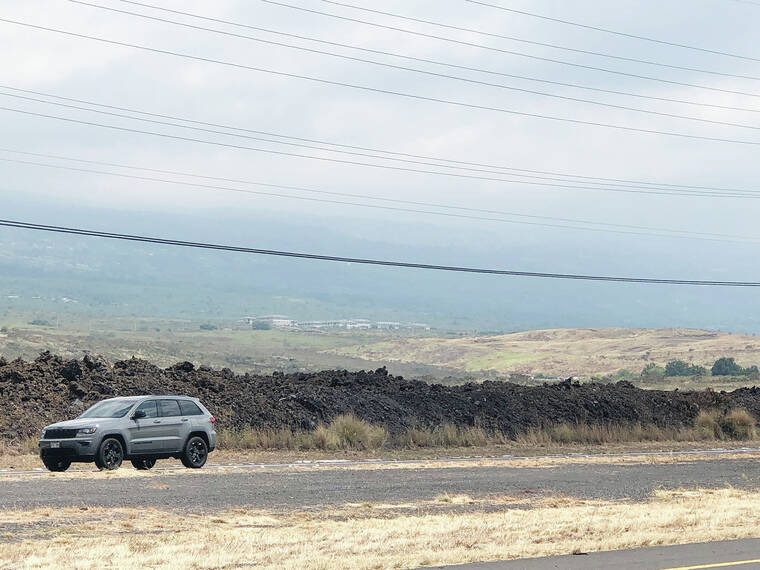
Hualalai is nearly obliterated by vog Friday afternoon. (Laura Ruminski/West Hawaii Today)
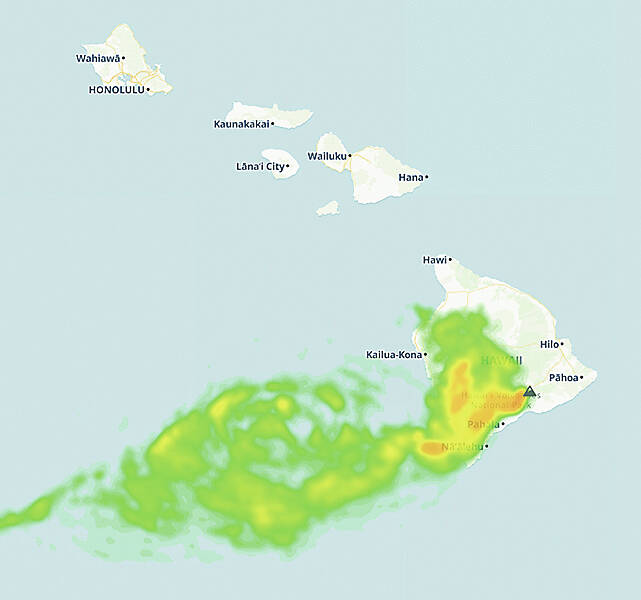
With northeasterly tradewinds forecast through Tuesday, the University of Hawaii at Manoa’s Vog Measurement and Prediction Project said small amounts of vog may continue to impact areas southwest of the Kilauea summit caldera, including the western half of the southern coast of Hawaii Island (the Ka‘u District). This screen grab shows a forecast for Saturday morning. (Vog Measurement and Prediction Project/Special to West Hawaii Today)
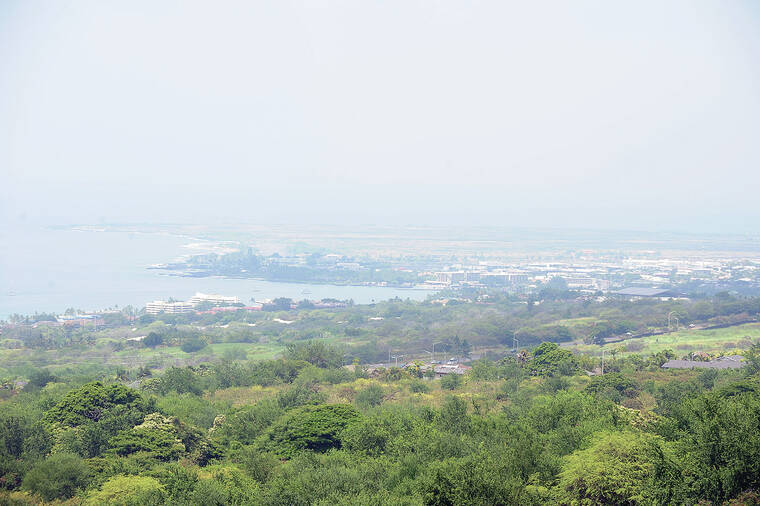
Vog blankets Kona on Friday. (Laura Ruminski/West Hawaii Today)
The vog is back.
The vog is back.
Volcanic smog, or “vog,” filled West Hawaii’s skies Friday, obliterating views of Hualalai and blurring the horizon, as Kilauea volcano continued to erupt for a third day, pumping out thousands of tons of sulfur dioxide (SO2), which reacts with the atmosphere and creates the visible haze.
The Hawaiian Volcano Observatory said in its Friday morning update lava continued to erupt from multiple vents in Halema’uma’u crater, filling a continually growing lava lake. SO2 emission rates remained high, estimated at over 20,000 tons per day Thursday morning, down from 85,000 tonnes per day at the start of the eruption Wednesday afternoon.
Fanned by southerly winds, the vog typically moves southwest across the Ka‘u District, hitting first areas like Pahala, Naalehu and Ocean View, before getting caught up in sea breezes that bring it toward West Hawaii and onshore.
In addition to visual impacts, vog also creates the potential for airborne health hazards to residents and visitors, damages agricultural crops and other plants, and affects livestock, according to the state Department of Health.
Physical complaints associated with vog exposure include headaches, burning, itchy or watery eyes, throat pain, fatigue, difficulty breathing, and even flu-like symptoms. Doctors and officials advise those with pre-existing conditions to make sure they have ample medication on hand.
The best way to keep from becoming “vogged” down? Avoid outdoor activities of all forms, and if you have to venture out, make sure you’re keeping tabs on the air quality and have a plan in place to react quickly should the quality drop. Staying away from smoking and other respiratory irritants, as well as keeping hydrated and generally taking care of oneself help can help, too.
Air quality and other information can be monitored via the Hawaii Interagency Vog Information Dashboard at vog.ivhhn.org. The Department of Health currently has 11 monitoring stations. As of Friday, there were no immediate plans to deploy additional mobile stations to monitor air quality as the state did during the 2018 eruption of Kilauea.
“A need for this will be continually evaluated as the eruption continues,” said state toxicologist Diana Felton with the Department of Health’s Hazard Evaluation and Emergency Response Office.
As of Friday evening, air quality at the Kona, Captain Cook and Honaunau monitoring sites was listed as yellow or “moderate.” Ocean View was listed as “green” or good, as was Naalehu and Pahala. Earlier Friday, Ocean View’s air quality was listed as “red” or unhealthy.
With northeasterly tradewinds forecast through Tuesday, the University of Hawaii at Manoa’s Vog Measurement and Prediction Project said small amounts of vog may continue to impact areas southwest of the Kilauea summit caldera, including the western half of the southern coast of Hawaii Island (the Ka‘u District).
The recent activity at Kilauea marks the second eruption of the volcano amid the COVID-19 pandemic. Kilauea last erupted Dec. 23, 2020, through late May.
Felton said there has not been a lot of additional information learned in the area since the last eruption, but noted some small studies have found an association with long-term exposure to manmade air pollution (particulate matter) and increased COVID-19 mortality.
“It is hard to know how to apply this information given the different chemical make-up of vog and the fact that vog exposure in Hawaii County is not constant the way man-made air pollution is in these studies. However, given that COVID is primarily a respiratory illness, it stands to reason that poor air quality could make the symptoms of COVID worse, and vice versa as mentioned above,” she said. “We do not have scientific data supporting this but work is being done related to wildfire smoke and COVID that may provide more information in the future. We do not know if exposure to poor air quality could make someone more likely to contract COVID-19.”
Felton said getting vaccinated and taking steps to prevent infection with COVID-19 is the best means for protecting oneself and their respiratory health.
“It is important that people remember that cloth face masks used to prevent the transmission of COVID-19 do not protect the wearer from sulfur dioxide gases and other hazardous components of vog,” she said.


